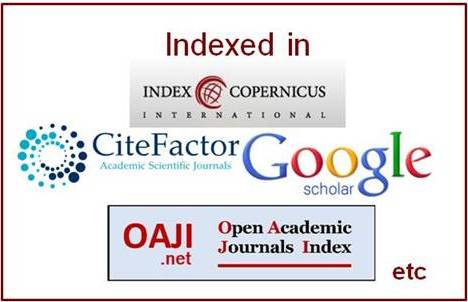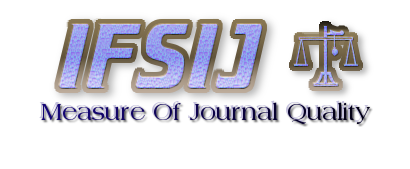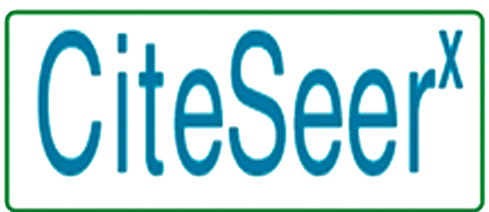Aging slows down with antioxidants: is it possible?
Abstract
We have excess mortality in many countries, which also affects younger people with no known previous diseases. From this point of view, it seems reasonable to look for life-prolonging methods. According to current knowledge, one of the main factors is the neutralization of oxidants and free radicals. For this purpose, there exist a set of natural means known as antioxidants. This article presents three of them, which have been proven to have a strong effect in preventing diseases and prolonging life. They are: C60 fullerenes, astaxanthin, and glutathione. Their regular intake can be recommended.
Downloads
References
Rhee, S. G. (1999). Redox signaling: hydrogen peroxide as an intracellular messenger. Exp Mol Med, 31(2), 53-59.
Gilbert, A., & Baggott, J. (1991). Essentials of molecular photochemistry. Blackwell Scientific. ISBN 0-632-02428-3.
Herb, M., & Schramm, M. (2021). Functions of ROS in Macrophages and Antimicrobial Immunity. Antioxidants, 10(2), 313. doi:10.3390/antiox10020313
Gluschko, A., Herb, M., Wiegmann, K., Krut, O., & Neiss, W. F. (2018). The β2 Integrin Mac-1 Induces Protective LC3-Associated Phagocytosis of Listeria monocytogenes. Cell Host & Microbe, 23(3), 324-337.e5. doi:10.1016/j.chom.2018.01.018
Herb, M., Gluschko, A., Wiegmann, K., Farid, A., & Wolf, A. (2019). Mitochondrial reactive oxygen species enable proinflammatory signaling through disulfide linkage of NEMO. Science Signaling, 12(568), aar5926. doi:10.1126/scisignal.aar5926.
Lin, M. T., & Beal, M. F. (2006). Mitochondrial dysfunction and oxidative stress in neurodegenerative diseases. Nature, 443, 787-795.
Scatena, R., Bottoni, P. P., & Giardina, B. (Eds.). (2012). Advances in Mitochondrial Medicine. Advances in Experimental Medicine and Biology (Vol. 942). Springer. ISBN 978-94-007-2868-4.
Seyfried, T. (2012). Cancer as a Metabolic Disease: On the Origin, Management, and Prevention of Cancer. John Wiley & Sons. ISBN 978-0-470-58492-7.
Giebelstein, J., Poschmann, G., Højlund, K., Schechinger, W., Dietrich, J. W., Levin, K., Beck-Nielsen, H., Podwojski, K., Stühler, K., Meyer, H. E., & Klein, H. H. (2012). The proteomic signature of insulin-resistant human skeletal muscle reveals increased glycolytic and decreased mitochondrial enzymes. Diabetologia, 55, 1114-1127.
Müller, T., et al. (2012). P62 links β-adrenergic input to mitochondrial function and thermogenesis. Journal of Clinical Investigation, 123(1). doi:10.1172/JCI64209
Bjelakovic, G., Nikolova, D., Gluud, L. L., Simonetti, R. G., & Gluud, C. (2007). Mortality in Randomized Trials of Antioxidant Supplements for Primary and Secondary Prevention: Systematic Review and Meta-analysis. JAMA, 297, 842-857. PMID: 17327526
Norwood, D. V. (2004). Eating More Fruits and Vegetables May Lower Risk of Heart Disease, Not Cancer. November 2004.
Bjelakovic, G., Nikolova, D., Simonetti, R. G., & Gluud, C. (2008). Antioxidant supplements for preventing gastrointestinal cancers. Cochrane Database of Systematic Reviews, 16, CD004183. PMID: 18677777
Bjelakovic, G., Nikolova, D., Gluud, L. L., Simonetti, R. G., & Gluud, C. (2008). Antioxidant supplements for prevention of mortality in healthy participants and patients with various diseases. Cochrane Database of Systematic Reviews, 16, CD007176. PMID: 18425980.
Kroto, H. W., Heath, J. R., O’Brien, S. C., Curl, R. F., & Smalley, R. E. (1985). C60: Buckminsterfullerene. Nature, 318(6042), 162-163. doi:10.1038/318162a0
Kraetschmer, W., Lamb, L. D., Fostiropoulos, K., & Huffman, D. R. (1990). Solid C60: a new form of carbon. Nature, 347(6291), 354-358. doi:10.1038/347354a0.
Baati, T., Bourasset, F., Gharbi, N., Njim, L., Abderrabba, M., Kerkeni, A., Szwarc, H., & Moussa, F. (2012). The prolongation of the lifespan of rats by repeated oral administration of C60-fullerene. Biomaterials, 33(19), 4936-4946. doi:10.1016/j.biomaterials.2012.03.036
Grohn, K. J., Moyer, B. S., Wortel, D. C., Fisher, C. M., Lumen, E., Bianchi, A. H., Kelly, K., Campbell, P. S., Hagrman, D. E., Bagg, R. G., Clement, J., Wolfe, A. J., Basso, A., Nicoletti, C., Lai, G., Provinciali, M., Malavolta, M., & Moody, K. J. (2021). C60 in olive oil causes light-dependent toxicity and does not extend lifespan in mice. GeroScience, 43(2), 579-591. doi:10.1007/s11357-020-00292-z
Lin, M. T., & Beal, M. F. (2006). Mitochondrial dysfunction and oxidative stress in neurodegenerative diseases. Nature, 443, 787-795.
Baati, T., et al. (2012). The prolongation of the lifespan of rats by repeated oral administration of C60-fullerene. Biomaterials, 33(19), 4936-4946.
Kono, K., Shimizu, Y., et al. (2014). Effect of multiple dietary supplements containing lutein, astaxanthin, cyanidin-3-glucoside, and DHA on accommodative ability. Current Medical Chemistry, 21(6), 114-125.
Park, J. S., Chyun, J. H., et al. (2010). Astaxanthin decreased oxidative stress and inflammation and enhanced immune response in humans. Nutrition & Metabolism, 7, 18.
Kurashige, M., Okimasu, E., et al. (1990). Inhibition of
oxidative injury of biological membranes by astaxanthin. Physiological Chemistry & Physics & Medical NMR, 22(1), 27-38.
Yamashita, E. (2006). Cosmetic benefit of dietary supplements containing astaxanthin and tocotrienol on human skin. Food Style, 21(6), 112-117.
Comhaire, F., & Mahmoud, A. (2008). The role of food supplements in the treatment of the infertile man. Reproductive BioMedicine Online, 7(4), 385-391.
Zhang, S., Hunter, D. J., et al. (1999). Dietary carotenoids and vitamins A, C, and E and risk of breast cancer. J Natl Cancer Inst, 91(6), 547-556.
Uchiyama, K., Naito, Y., et al. (2002). Astaxanthin protects beta-cells against glucose toxicity in diabetic db/db mice. Redox Rep, 7(5), 290-293.
Gradelet, S., Le Bon, A. M., et al. (1998). Dietary carotenoids inhibit aflatoxin B1-induced liver preneoplastic foci and DNA damage in the rat: role of the modulation of aflatoxin B1 metabolism. Carcinogenesis, 19(3), 403-411.
Nagaki, Y., Mihara, G., et al. (2006). The supplementation effect of astaxanthin on accommodation and asthenopia. Journal of Clinical Therapeutics & Medicines, 22(1), 41-54.
Penn State News. (2013). Research shows oral supplement increases the body's storage of antioxidants. April 22, 2013.
Robinson, M. K., Ahn, M. S., Rounds, J. D., Cook, J. A., Jacobs, D. O., & Wilmore, D. W. (1992). Parenteral glutathione monoester enhances tissue antioxidant stores. JPEN J Parenter Enteral Nutr, 16(5), 413-418.
Comhaire, F., Mahmoud, A., & Schoonjans, F. (2005). Combinedefficacy of a daily sublingual application of a new formulation of L-glutathione and N-acetyl-L-cysteine on the seminal parameters of subfertile men. Academisch Ziekenhuis Vrije Universiteit Brussel.
Kumar, P., Liu, C., Suliburk, J., Hsu, J. W., Muthupillai, R., Jahoor, F., Minard, C. G., Taffet, G. E., & Sekhar, R. V. (2023). Supplementing Glycine and N-Acetylcysteine (GlyNAC) in Older Adults Improves Glutathione Deficiency, Oxidative Stress, Mitochondrial Dysfunction, Inflammation, Physical Function, and Aging Hallmarks: A Randomized Clinical Trial. The Journals of Gerontology: Series A, 78(1), 75-89. doi:10.1093/gerona/glac135
Glutathion-News. Reduziertes Glutathion (GSH) oder GSH-Vorstufen wie N-Acetylcystein (NAC)?
Please note that some references are URLs and may not be formatted in the conventional way, but they provide access to online sources. Always verify the validity and reliability of online sources before using them in academic or scientific works.
Copyright (c) 2023 Doepp, Manfred

This work is licensed under a Creative Commons Attribution-NonCommercial-NoDerivatives 4.0 International License.
Author(s) and co-author(s) jointly and severally represent and warrant that the Article is original with the author(s) and does not infringe any copyright or violate any other right of any third parties, and that the Article has not been published elsewhere. Author(s) agree to the terms that the GPH Journal will have the full right to remove the published article on any misconduct found in the published article.























